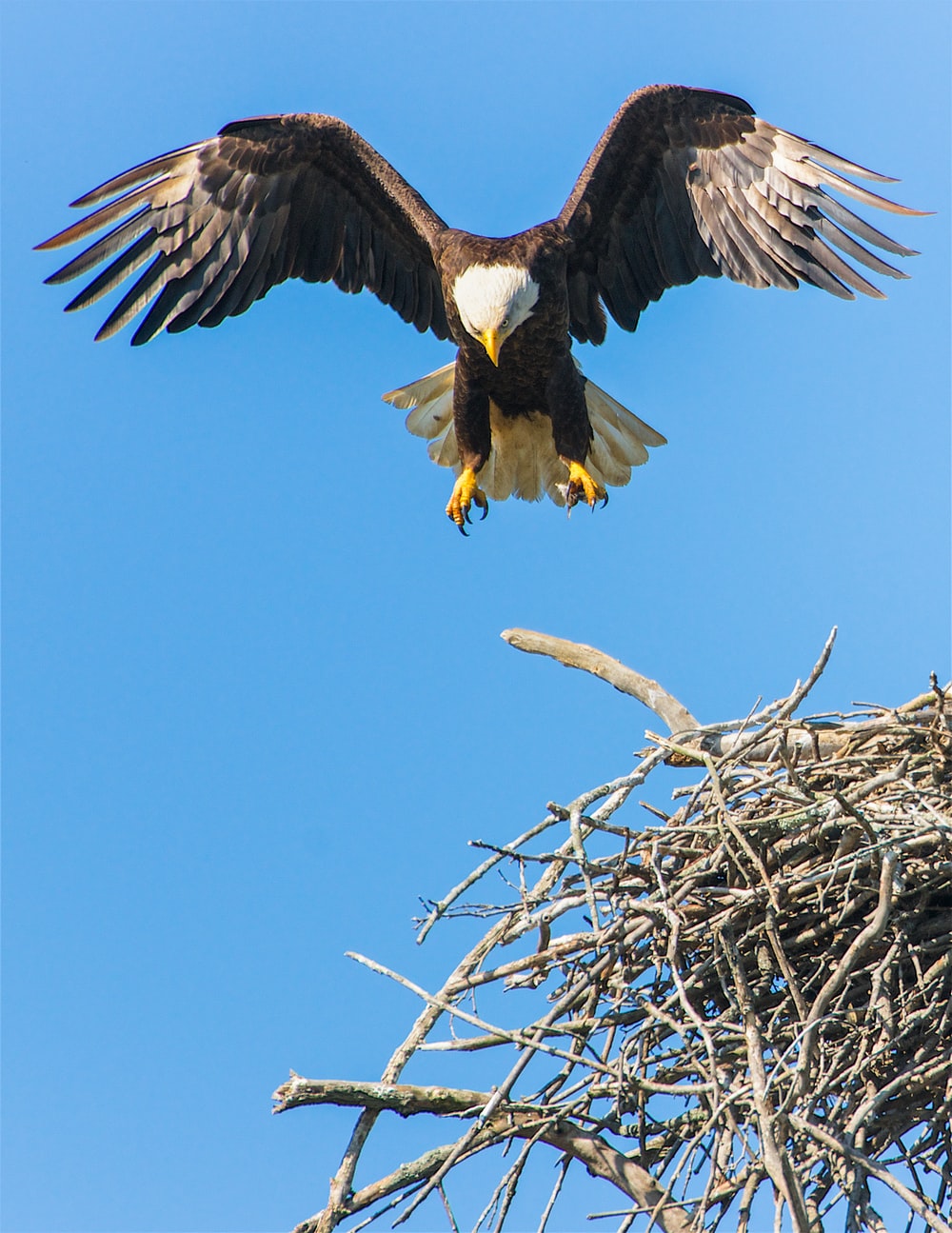


There are 68 species of eagle in the family Accipitridae, and species are
as an eagle
based on their ability to hunt large prey (over 50cm in
length) rather than because they are
closely
related. Eagles can be found on
every continent except Antarctica, though most live in Africa
and
Asia. They are
threatened by climate change, hunting, habitat loss, and electrocution from
power
lines.
| Family: | Accipitridae |
| Diet: | Carnivore |
| Lifespan: | up to 30 years |
| Wingspan: | up to 2.4 m |
| Size: | 0.8 – 1.4 m |
| Weight: | up to 7 kg |
| Group name: | congress, convocation |

Eagles are some of the largest birds of prey. The White-tailed Eagle Haliaeetus albicilla has the largest wingspan at up to 8 feet long, whereas the Steller’s Sea Eagle Haliaeetus pelagicus (Vulnerable) is the heaviest and can weigh up to around 7 kg. Female eagles are typically larger than males of the same species.
Eagles are ferocious predators, their size and strength putting them at the top of the food chain. They use their sharp, strong talons to snatch and grasp their prey and tear the flesh with their large hooked beak. Their choice of prey depends on species and includes fish, birds, snakes, or often any medium-sized animal that crosses their path. Their sharp eyesight enables them to spot prey the size of a rabbit around three miles away, before they swoop down, grab their target, and carry it to a perch to eat.
Eagle nests are called eyries and are built in inaccessible places, typically high up on trees or cliffs. They will often re-use the same nest year on year, topping it up with new material when needed, and it can get large enough to cause damage to the tree. Most species lay an average of two eggs and it is not uncommon for the eldest chick to kill the younger to ensure its own survival.
